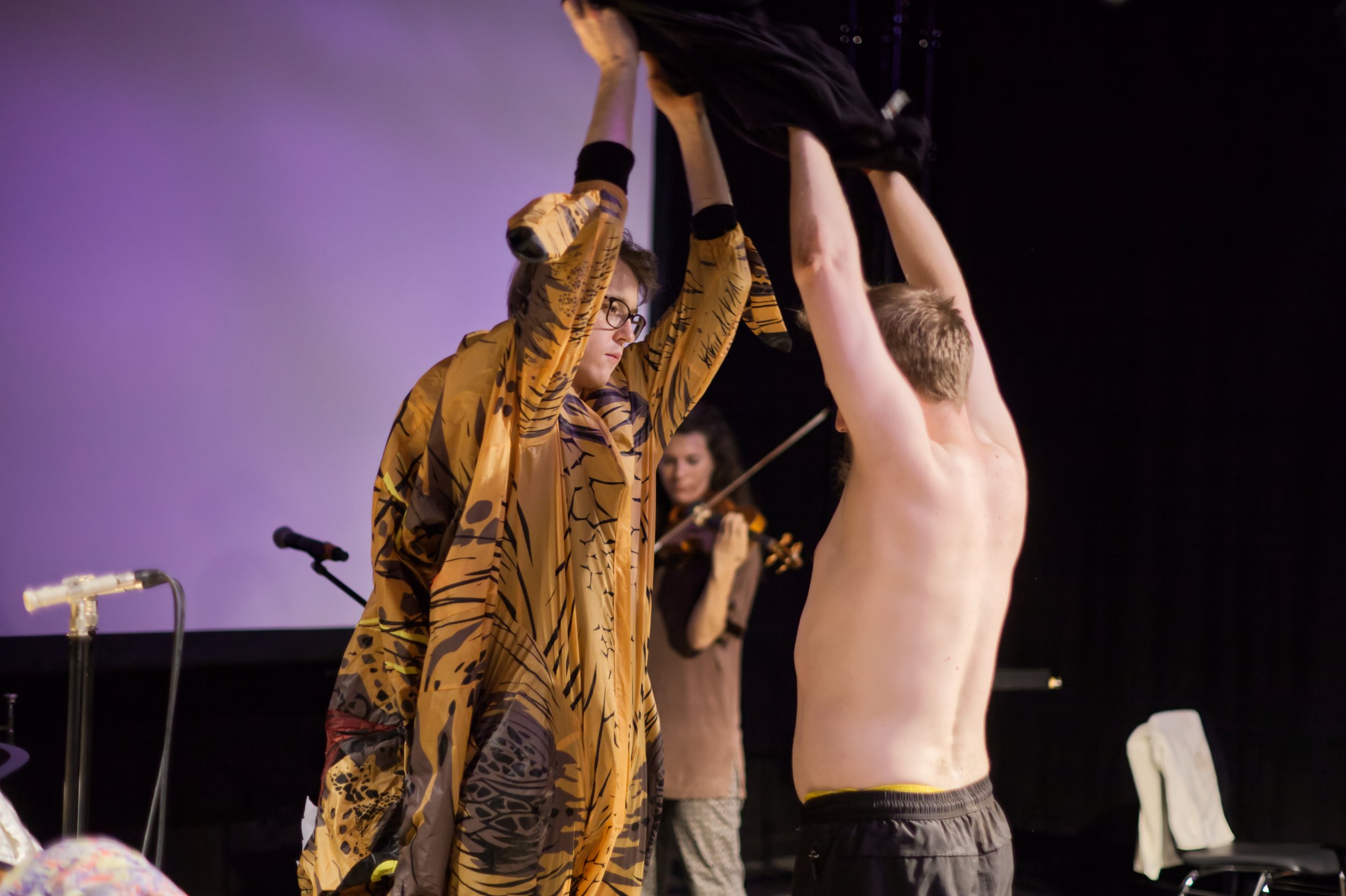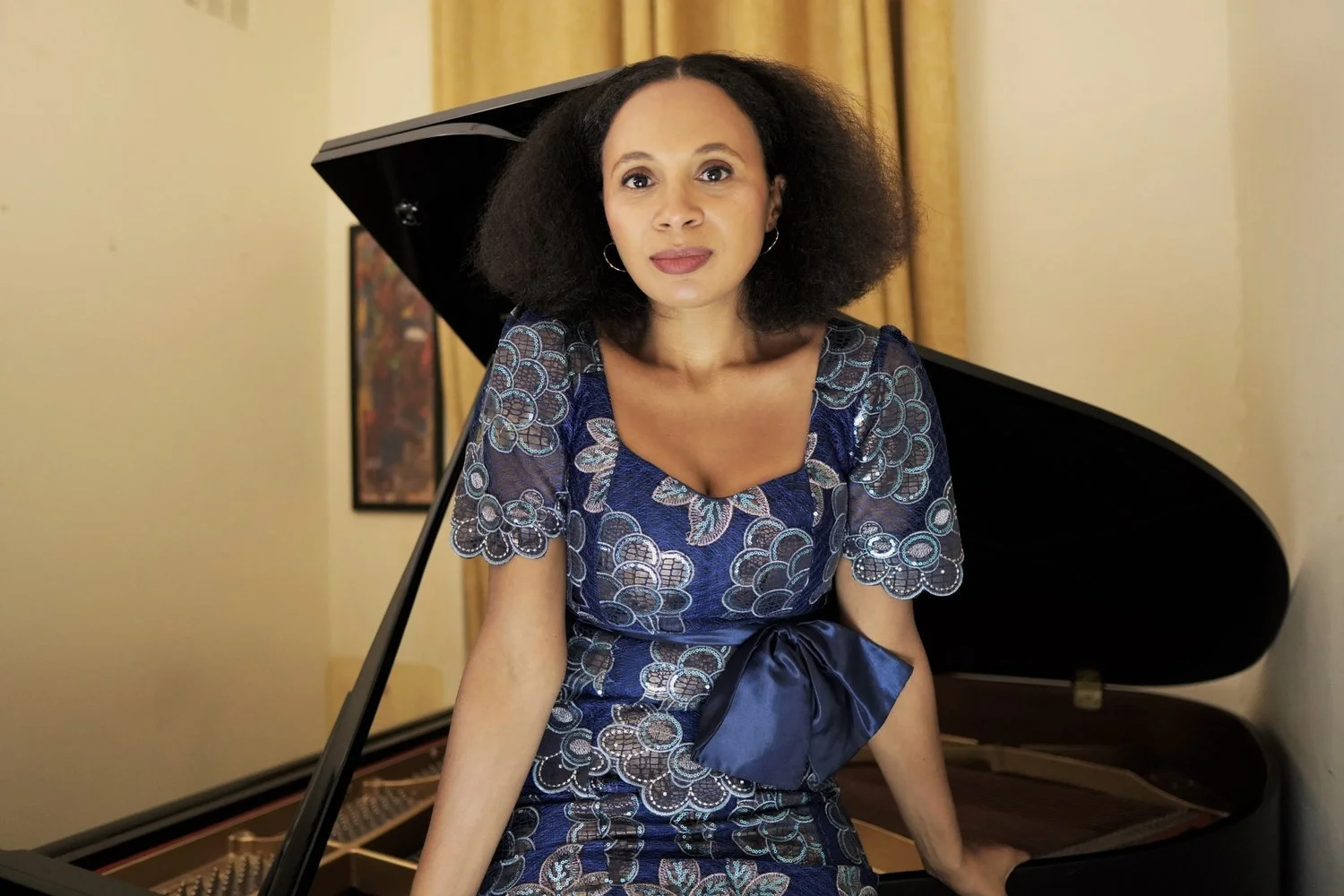We caught up with Associate Composer Elischa Kaminer – learn about his inspiration, influences and collaborative practice.
Read more about the Associate Composers Scheme >>>
Elischa Kaminer curates: To paint over and to make sense >>>
Can you tell us a little about your creative practice?
My earliest memory of being creative was probably dancing and singing along to Whitney Houston, getting into drag together with my sister in the biggest dresses we could find. Ever since, I’ve delved into various forms of making music, theatre, sounds, songs and performances, always with an element of improvisation and research into modes of ‘play’ at the heart of it – how do children play? How do ‘adults’ play? How do animals play? How do fungi play? What rhythmicalities, dramaturgies and temporalities do various forms of play entail – including sexual play, musical play, video games and so on. How can ‘play’ be understood as a space for mourning, continuous care-work and a space for resurrecting the dead, with things such as dead bodies, dead ecosystems, supposedly dead musical traditions, inanimate objects like instruments, technologies, architectures etc.
Where do you find inspiration for your work?
My friends, how I have played with them and still play with them forms one of the biggest influences on my creative practice. Playing, talking, writing, thinking and laughing with the people I collaborate with is almost always at the beginning of my working process. Improvising together is a window into getting to know each other, as we collectively search for sustainable modes of listening and rhythms of communal play.
At the moment, I’m reading and thinking a lot about queer and talmudic literature, intersectional feminist writings, science fiction, texts on fungi and mycorrhizal relationships (thank you Mayah Kadish for the book!) and Rabbi Delphine Horvilleur’s words on mourning and Jewish responses to crisis. Seeing my two year old niece play and growing up has also been one of the most inspiring things; and seeing how my sister, her partner and my parents care for her.
Elischa’s work To paint over and to make sense – Photo: Kathinka Schroeder
How do the people you collaborate with influence your work?
I think a performers’ humour and how they move is often of great importance when devising a work. I love getting to know the intricacies of how people move and play my works are often created with and for specific performers. With all their sensitivity, intuition, knowledge, virtuosic abilities and thoughts, the artists I collaborate with somewhat resemble sages to me. I like to think of the scores I create as landscapes in which the performers (and sometimes audiences) can conjure images, spirits and beasts through different forms of ritual and play. The material they evoke through these rituals often makes me think of ‘Golems’ – creatures in Jewish mysticism created by only the wisest of rabbis. They represent allies and fabulous forces with superpowers – though they can grow vast and out of control, they are ultimately there to protect you.
At the same time, I love seeing material transform once performers ‘swap dresses’, or swap the ‘Golems’ they have conjured. It’s almost like the artist is “dragging up” in material that is counter-intuitive to that particular performer’s way of playing and moving. Inversely, I love seeing a body change with the material – almost like pulling on a dress, the performer can seemingly transform when interacting with certain material. It can highlight certain traits of their physiology, musicality and personality that we otherwise might not see; or alternately it may alter the spectator’s gaze, their imagination and projections onto these bodies.
Elischa’s work To paint over and to make sense – Photo: Kathinka Schroeder
I feel the way we move and how we perceive and interpret movement – whether on a stage or in everyday life – can give indications of why we move in the first place. How we move ultimately tells stories of our motivations and also what moves us. I think the big Pina Bausch quote goes: “I'm not interested in how people move, but what moves them.” However, I feel there is great importance in the materiality of movement, bodies and gestures, and the way in which they are dressed and addressed. The specifics matter. Donna Haraway said it best: “It matters what matters we use to think other matters with; it matters what stories we tell to tell other stories with; it matters what knots knot knots, what thoughts think thoughts, what descriptions describe descriptions, what ties tie ties. It matters what stories make worlds, what worlds make stories.”
What are you most looking forward to about the scheme?
It’s very hard to pick one thing! All of the different elements are really all great. I believe the infrastructure, continuous support and the exchange with the Nonclassical team is wonderful and very rare. The curated event is probably one of the most exciting elements for me, as it’s a real wild card… I love wild cards. A message to any event producer, programmer, funding body or curator reading this – give artists wild cards to play! Time, money, infrastructure and trust – and the outcome might be an actual Golem.
















Meet our new Board members – Alan Davey and Karen Lee.